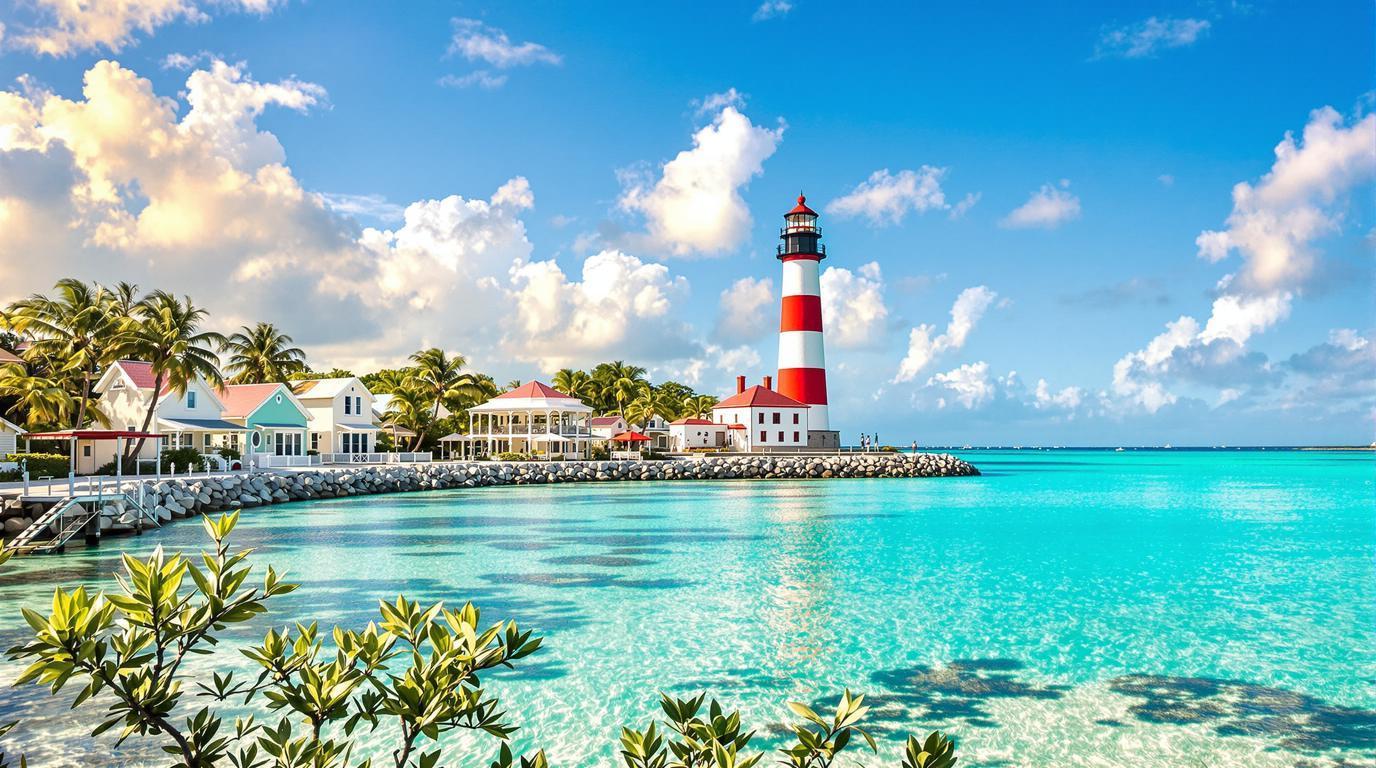I was frantically checking my watch at Nassau’s crowded ferry terminal when fate intervened. The 3 PM departure to Paradise Island was completely booked, leaving me stranded with nothing but a worn guidebook and growing frustration. That’s when a weathered Bahamian captain overheard my predicament and casually mentioned a “real island” called Hope Town.
Three hours later, I found myself aboard a rattling ferry bound for Elbow Cay, watching Nassau’s casino towers shrink behind us. What I discovered next would completely rewrite my understanding of authentic Caribbean life.
The moment our boat rounded the harbor, I gasped. Rising from crystalline waters stood the most beautiful lighthouse I’d ever seen – candy-striped red and white like something from a children’s storybook. But this wasn’t just any lighthouse. This was Hope Town’s 1863 Elbow Reef Lighthouse, the world’s last manually operated beacon.
The discovery that changed everything about Caribbean travel
A lighthouse keeper’s ancient ritual
As evening approached, I watched something extraordinary unfold. The lighthouse keeper emerged with a brass key, climbing the 101 spiral steps to hand-wind the beacon’s spring mechanism. Every two hours throughout the night, he repeats this ritual – no automation, no modern shortcuts, just pure human dedication keeping ships safe as it has for over 160 years.
The village that time forgot
Walking Hope Town’s narrow lanes, I realized something profound: there were no cars. Not one. The 458 residents of this extraordinary settlement have preserved their streets for bicycles, golf carts, and pedestrians only. Pastel-colored cottages line pathways barely wide enough for two people, creating an intimacy impossible in our motorized world.
What I found that guidebooks never mention
The lighthouse society’s secret preservation
I discovered that Hope Town’s authenticity isn’t accidental – it’s fiercely protected. The Elbow Reef Lighthouse Society actively prevents automation, sourcing extinct parts and maintaining traditional kerosene operations. Local volunteers told me they’ve turned down countless modernization offers to preserve this living piece of maritime history.
Island economics that defy Caribbean norms
While Nassau hotel rooms cost $200-400 per night, Hope Town’s intimate guesthouses charge $80-150, often including breakfast and bicycle loans. The village’s three restaurants serve authentic Bahamian cuisine without tourist markups – conch fritters cost $8 instead of Nassau’s $18, and the portions are twice as generous.
The transformation that surprised me most
Discovering slow travel’s true meaning
On my second morning, I climbed the lighthouse at sunrise and understood something fundamental. From the top, I could see the entire 4.5-mile island – every reef, every cottage, every fishing boat. This wasn’t just a destination; it was a complete world operating at human scale, where every resident knows every visitor by the end of their stay.
The reef that redefined paradise
Hope Town’s surrounding waters harbor some of the Caribbean’s most pristine coral reefs. Snorkeling directly from the village beaches, I encountered more marine life in an hour than during expensive Nassau excursions. Sea turtles, nurse sharks, and parrotfish thrive in these protected waters, undisturbed by cruise ship pollution or jet ski chaos.
Why I’ll never travel the same way again
The ferry schedule that teaches patience
Hope Town’s ferry runs just seven times daily from Marsh Harbour, with no Sunday evening service. Initially frustrating, I learned this limitation creates natural rhythms – visitors slow down, locals maintain control, and the island’s delicate balance stays intact. Missing that Nassau ferry became the best travel mistake of my life.
Community tourism done right
Every dollar spent in Hope Town directly supports the 458 residents who call this paradise home. The lighthouse tours fund preservation efforts, local restaurants employ village families, and guesthouses are owned by multi-generational islanders who treat visitors like extended family rather than walking wallets.
Hope Town taught me that authentic Caribbean experiences still exist – you just need to miss the right ferry to find them. This tiny lighthouse village proves that preservation and tourism can coexist beautifully when communities maintain control over their own destiny.
Sometimes the best discoveries happen when our carefully planned itineraries fall apart, opening space for genuine magic to unfold.
